
How to look for records of... Colonies and dependencies 1850-1926: using Colonial Office registers to locate correspondence
How can I view the records covered in this guide?
How many are online?
- None
1. Why use this guide?
Use this guide for advice on how to search for Colonial Office correspondence dating from 1850 to 1926 and now held at The National Archives. Colonial Office correspondence is an invaluable resource for studies of the history of the British Empire and the individual countries which were once British colonies.
You can search for references to the records online but you will need to visit us to view the documents themselves. For advice on other types of Colonial Office records see our guide to Colonies and dependencies from 1782.
2. What are the registers and why are they worth using?
Colonial Office staff recorded details of incoming correspondence in registers. They included details of the topic, date and sender and some information to help them to find related correspondence. Colonial Office registers can help you find documents on a subject when the details on our online catalogue are insufficient. They also often give details of the previous and next item of related correspondence. By reading through the registers, you can identify documents of interest without having to read through all the volumes of correspondence for a particular colony.
3. Registers versus indexes
As well as using the registers to find correspondence from this period, you can use the original Colonial Office indexes. The indexes cover correspondence from 1815 to 1870.
Whilst the registers list the incoming correspondence in order of date sent and are a more complete record of the correspondence received, the indexes conveniently group together details of correspondence (date and brief summary) by topic. For example, all the individual items of correspondence on gold mining in the colony of Victoria might be found under the heading ‘gold’ or ‘mining’ in the Victoria index. They therefore provide a very quick method of identifying the relevant correspondence. However, the keyword used may not be obvious and the indexes are not necessarily complete.
4. How to use the registers
There are separate series of registers for each former colony for each year. The registers are divided into three parts according to sender:
- Despatches – from the colonial governor
- Offices – from other government departments
- Individuals – from people or organisations outside of government
Step 1: Finding a register
Suppose we are interested in finding correspondence on the Ballarat rebellion on the goldfields of Victoria (later part of Australia but at the time a separate colony) in the early 1850s. To locate the relevant register, search by the name of the colony and ‘Registers of Correspondence’ for the year or period in which you are interested.
Use the advanced search option in our catalogue to conduct this search:
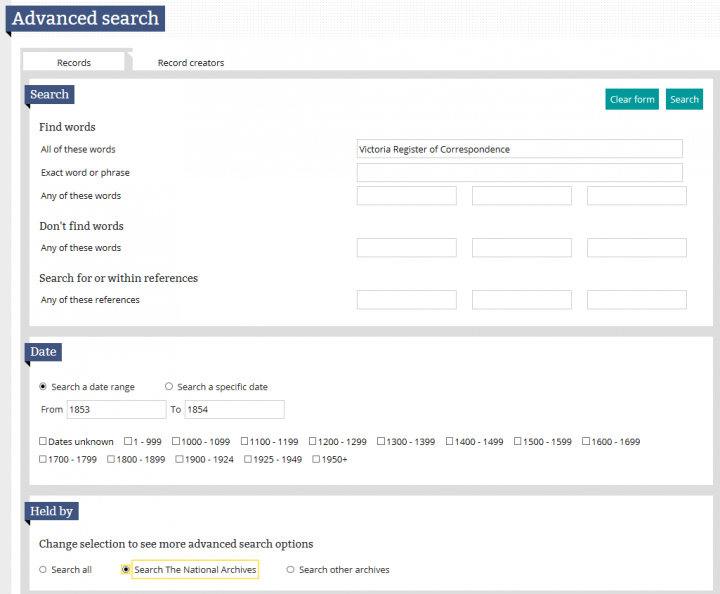
The advanced search page of our catalogue showing a search for the Victoria registers of correspondence from 1853-1854.
This produces the following results:
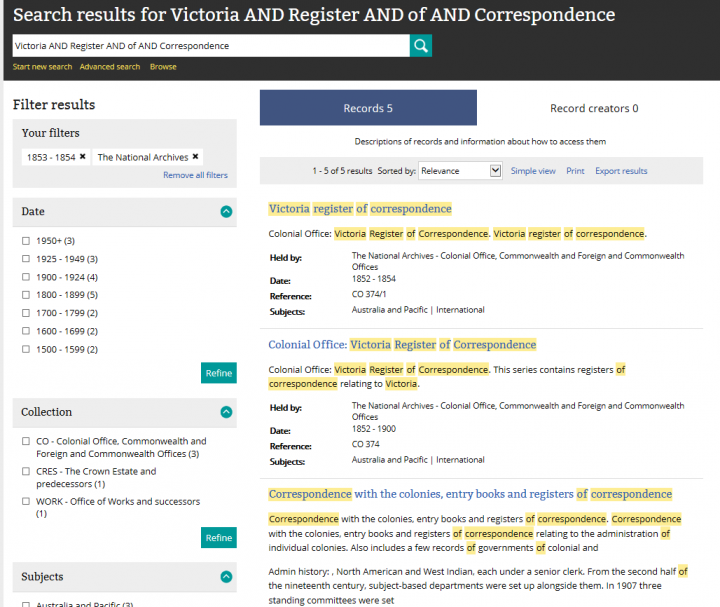
A search results page in our catalogue showing the results of a search for Victoria registers of correspondence from 1853-1854.
The register which we need to view is CO 374/1.
Step 2: Interpreting a register
This is a typical page within the register:
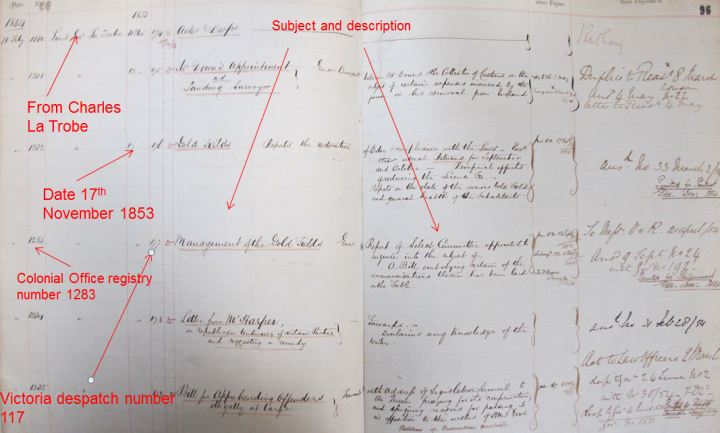
A double page spread from the Colonial Office register of correspondence 1852-1854 for Victoria, at the time a separate colony but later part of Australia. Document reference CO 374/1.
Suppose that we are interested in the third item, register number 1283, which concerns the report of a Select Committee on the management of the goldfields. To locate an item of correspondence, we need three pieces of information:
- The name of the colony: Victoria
- The name and status of the sender: Charles La Trobe, Governor, which means that the correspondence has been filed as ‘despatches’
- The date of the item: 17th November 1853
Step 3: Locating the correspondence
Find the catalogue series for Victoria Original Correspondence with this search:
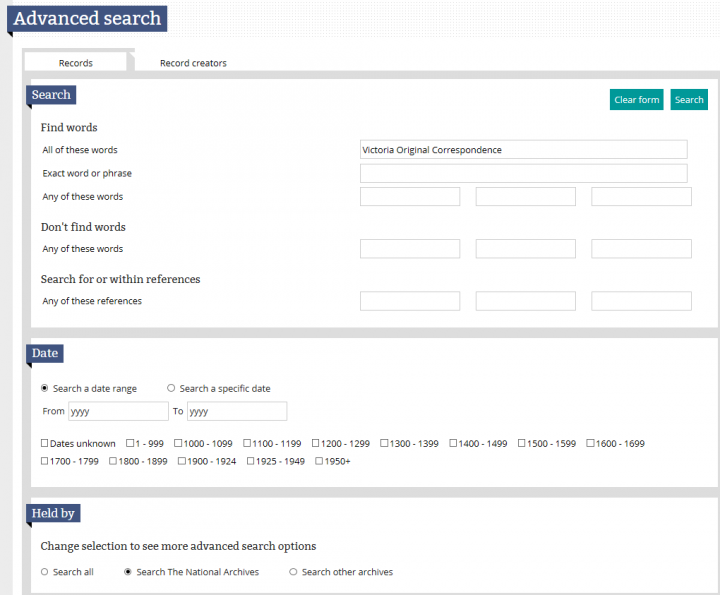
The advanced search page in our catalogue showing a search for correspondence for the colony of Victoria.
This produces the following results:
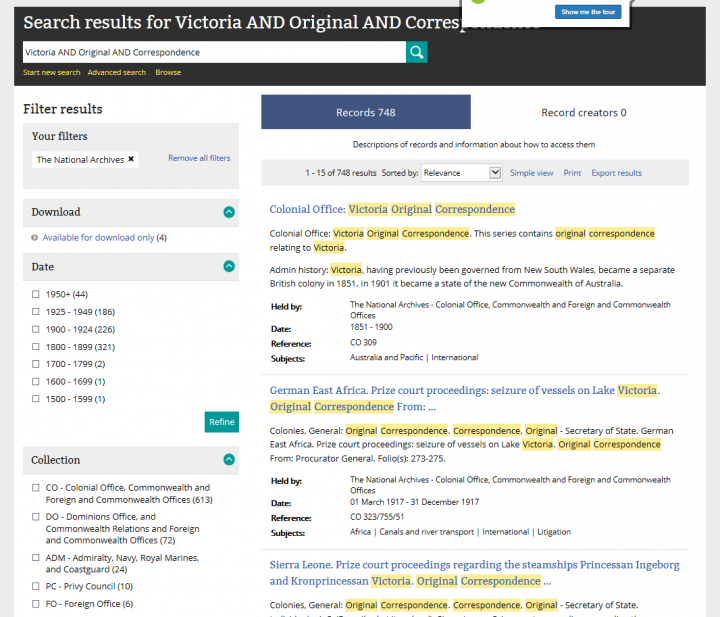
A search results page in our catalogue showing the results of a search for Victoria correspondence.
The series that we need is CO 309. Now search CO 309 for 1853, the year of our item of correspondence:
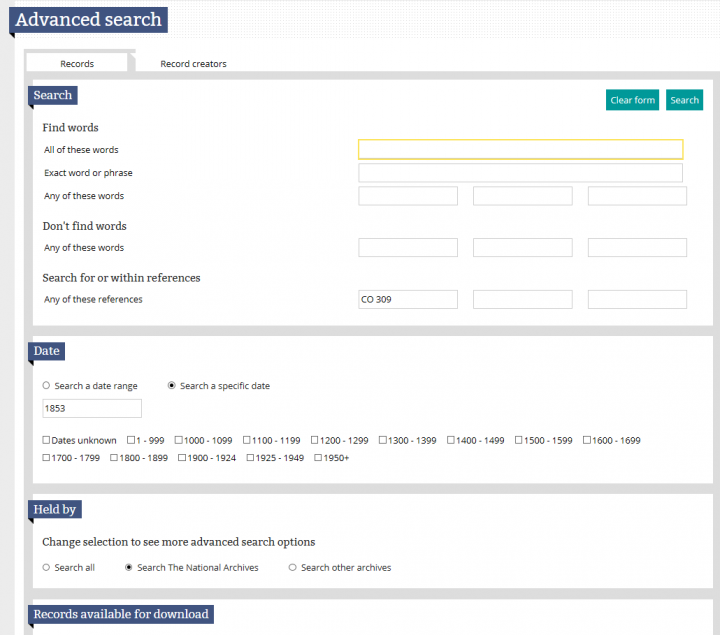
The advanced search page in our catalogue showing a search for 1853 within the record series CO 309 – note that a keyword is not needed.
Using the dropdown menu at the top of the search results, put the results in reference order and scroll down to the relevant date (17 November 1853):
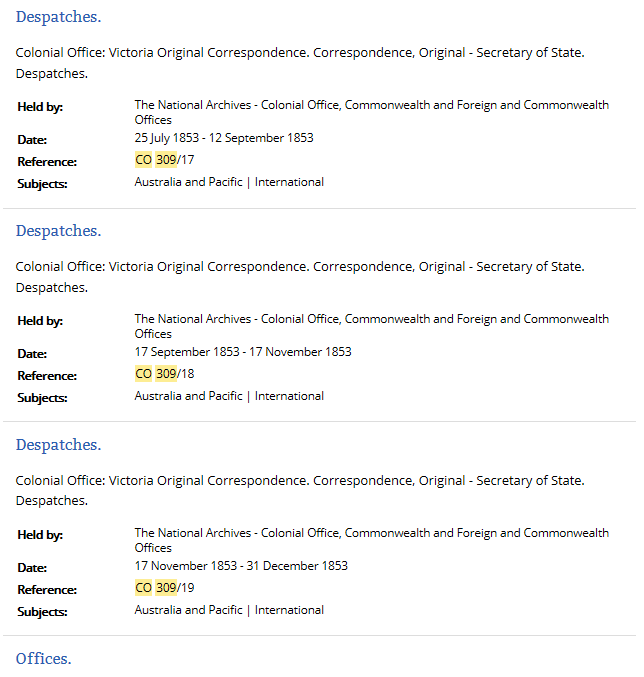
Catalogue search results for CO 309.
We cannot tell from the catalogue if the item of correspondence is in CO 309/18 or CO 309/19 (as they both cover 17th November), so we would need to order both volumes. In fact, the item is in CO 309/19.
Here is the front page of the correspondence:
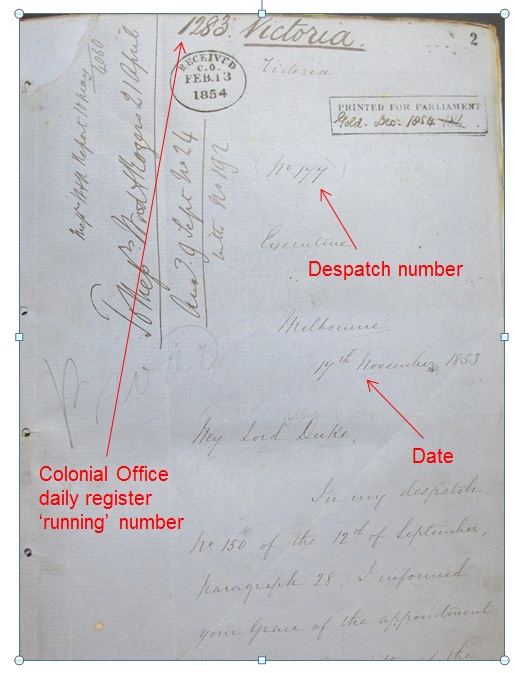
The front page of the correspondence for Victoria covering 17th November to 31st December 1853. Document reference CO 309/19.